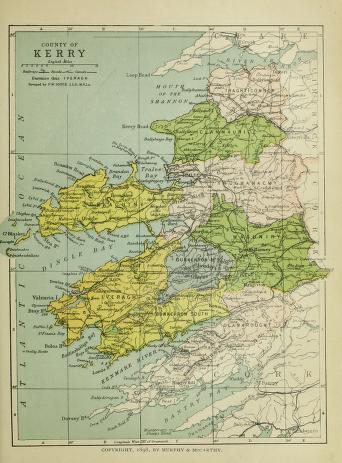Eight killed in Ballyseedy mine explosion as Kerry fatalities rise
Ballyseedy, 8 March 1923 - In Kerry, Eight anti-treaty prisoners were killed after being blown up by mines attached to a barricade they had been ordered to clear.
A statement issued by National Army headquarters claims that a party of their troop travelling from Tralee to Killorglin encountered a barricade of stones on a roadway at Ballyseedy. Rather than remove the barricade themselves, the statement says that the troops returned to Tralee and came back with a number of prisoners who were directed to remove the obstruction.
As they did, a trigger-mine apparently concealed in the barricade exploded, killing eight prisoners. The prisoners killed by the mine were - John Daly, Woodview, Castleisland; Patrick Hartnett, Listowel; Patrick Buckley, Scartaglin; James Walsh, Lisodigue, Tralee; Stephen Fuller, Lixnaw; George Shea, Lixnaw; T. Toumey, Lixnaw; T. O Connor, West Terrace, Liverpool; and Michael O’ Connor, Castleisland.
Following an incident the previous day at Knocknagoshel where five members of the National Army were killed by a trap-mine, General Paddy O’Daly ordered that in the future it would be left to prisoners to lift all mines and clear all dumps and barricades.
Kerry has been at the centre of some of the most violent Civil War disturbances in recent weeks. In the south of the county - in the wake of the Ballyseedy mine explosion - a further four prisoners were killed when a mine exploded when a barricade was being cleared north-east of the town of Cahirciveen. The incident occurred in the wake of a two-hour engagement involving National Army troops and Irregulars, which ended in the capture of seven of the latter, alongside arms, ammunition and equipment.
The sole National Army survivor of the Knocknagoshel Mine explosion has been named as Vol. Joseph O’Brien. Private O’Brien was discovered with both his legs shattered at the knees and only hanging to him by skin and muscle. Both legs were immediately amputated on his arrival at hospital in Tralee. It is understood that Private O’Brien has also suffered serious damage to his face and eyes.
And finally both the National Army and the anti-Treaty IRA forces suffered a number of fatalities during fighting at Gurrane.
[Editor's note: This is an article from Century Ireland, a fortnightly online newspaper, written from the perspective of a journalist 100 years ago, based on news reports of the time.]





















